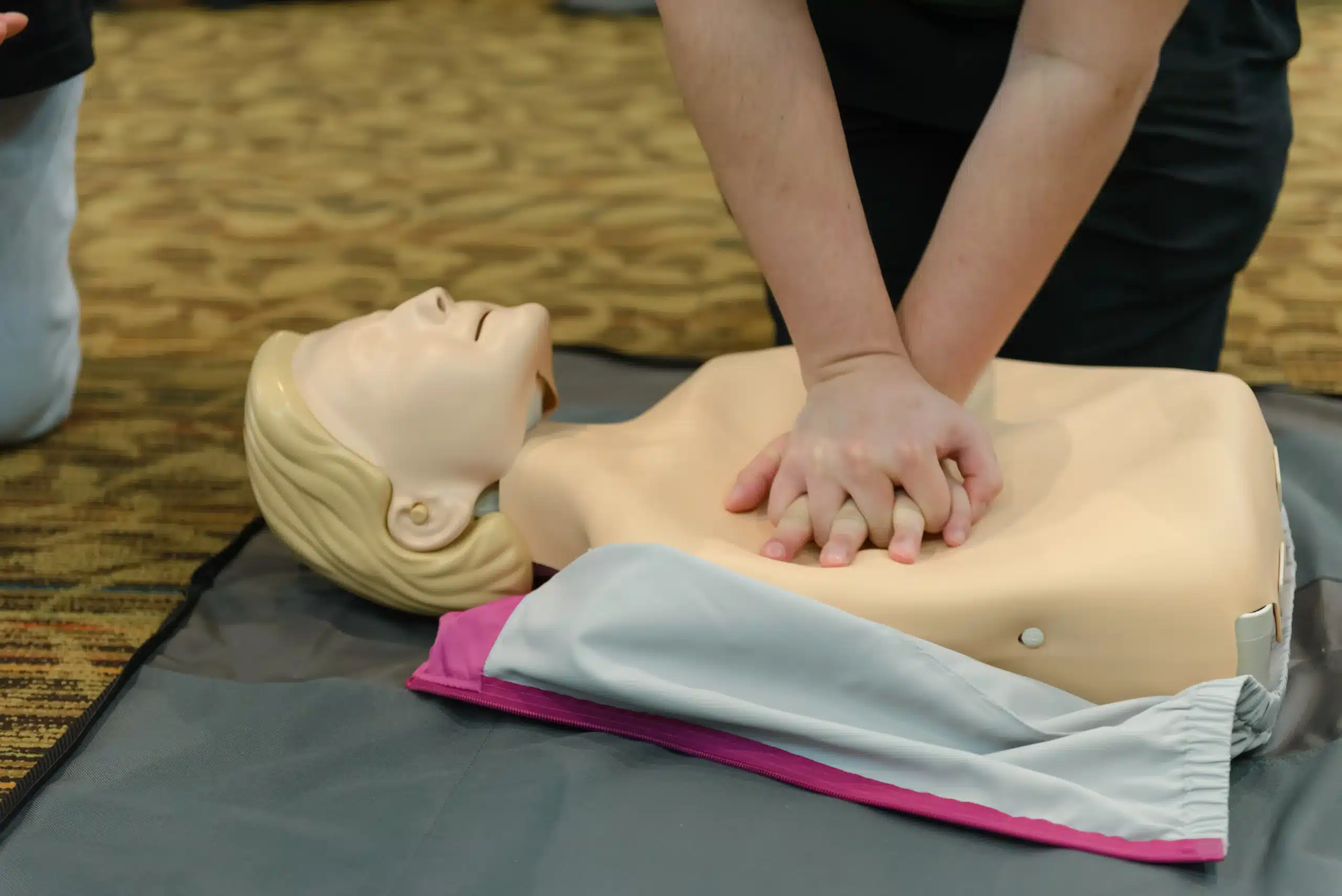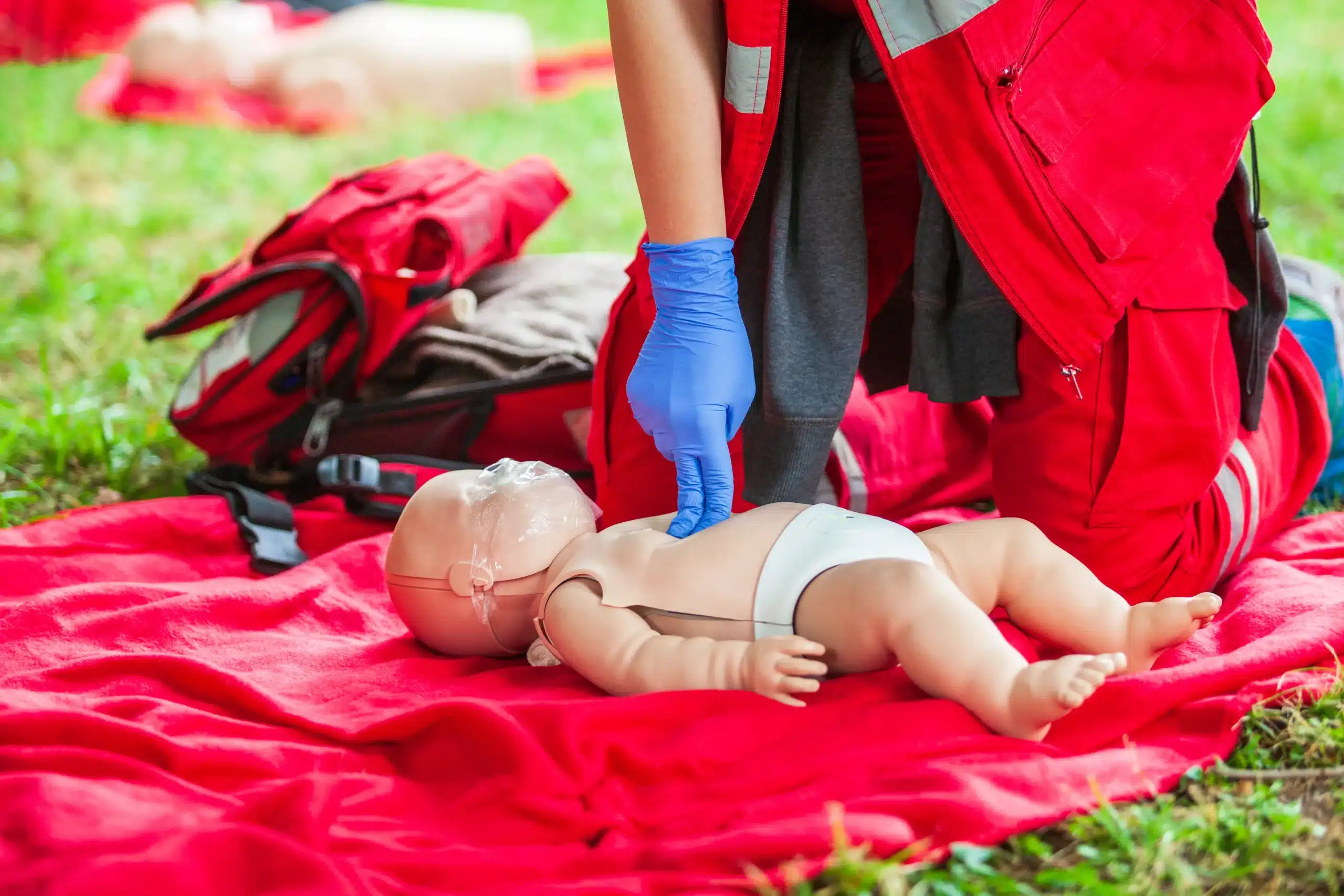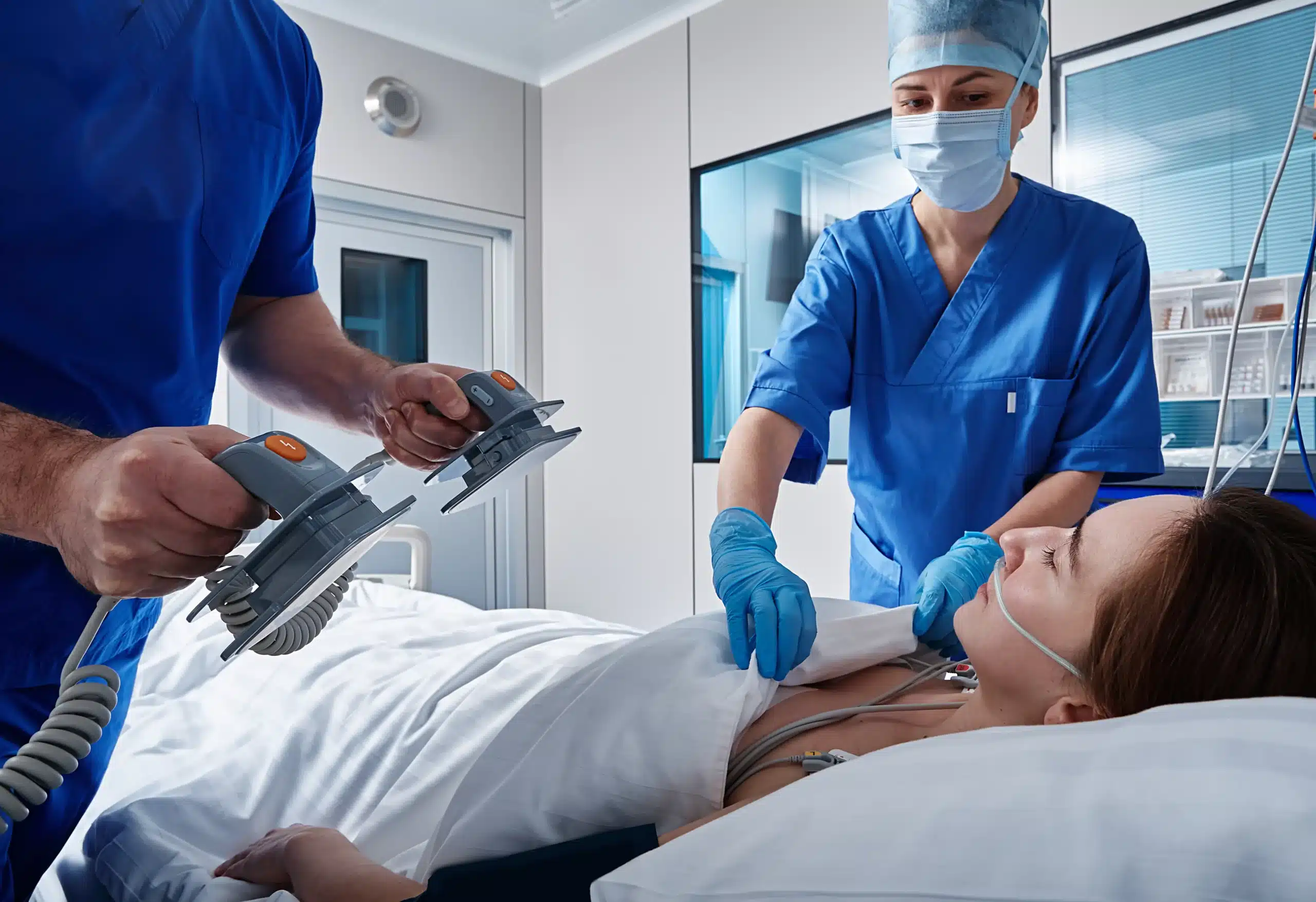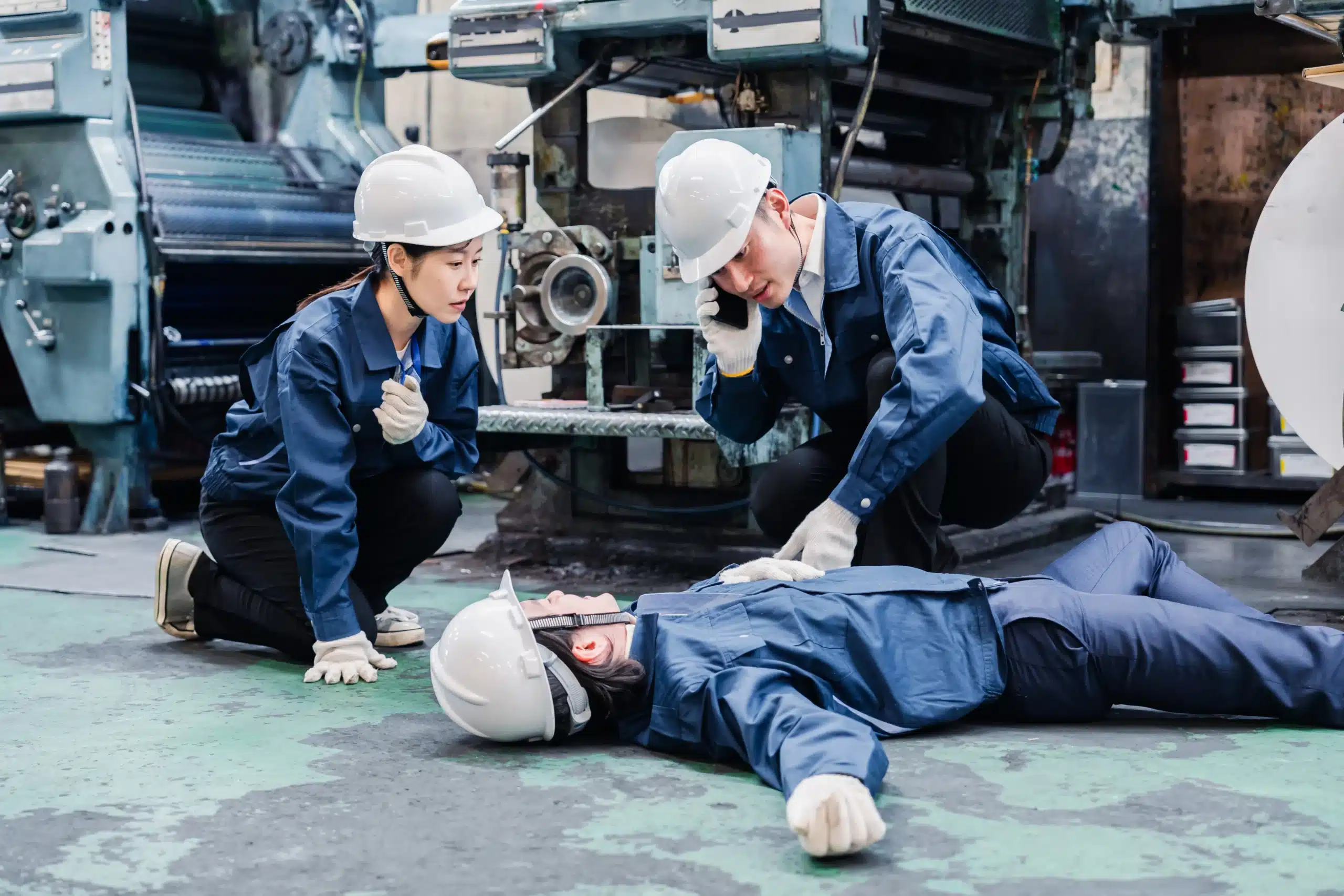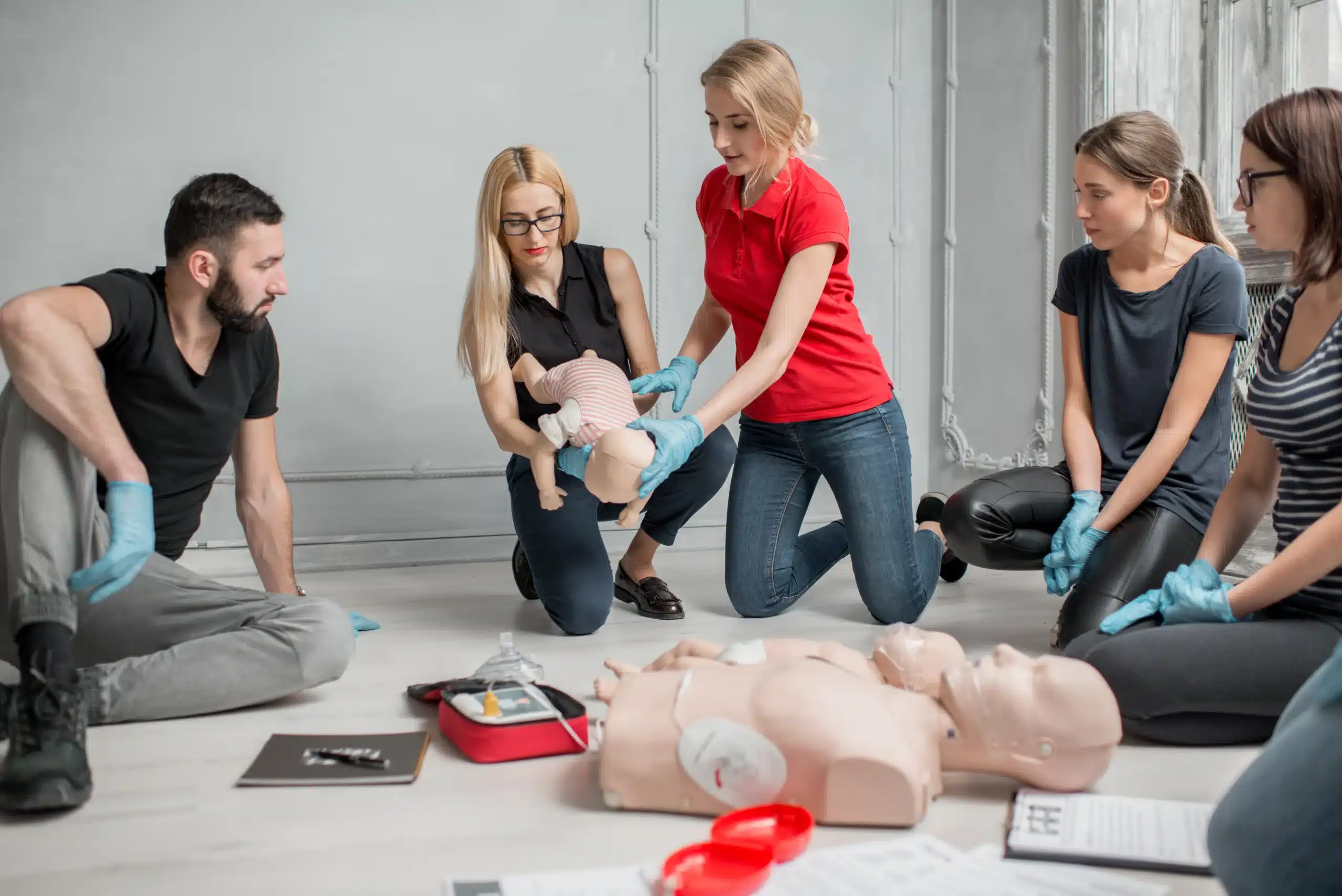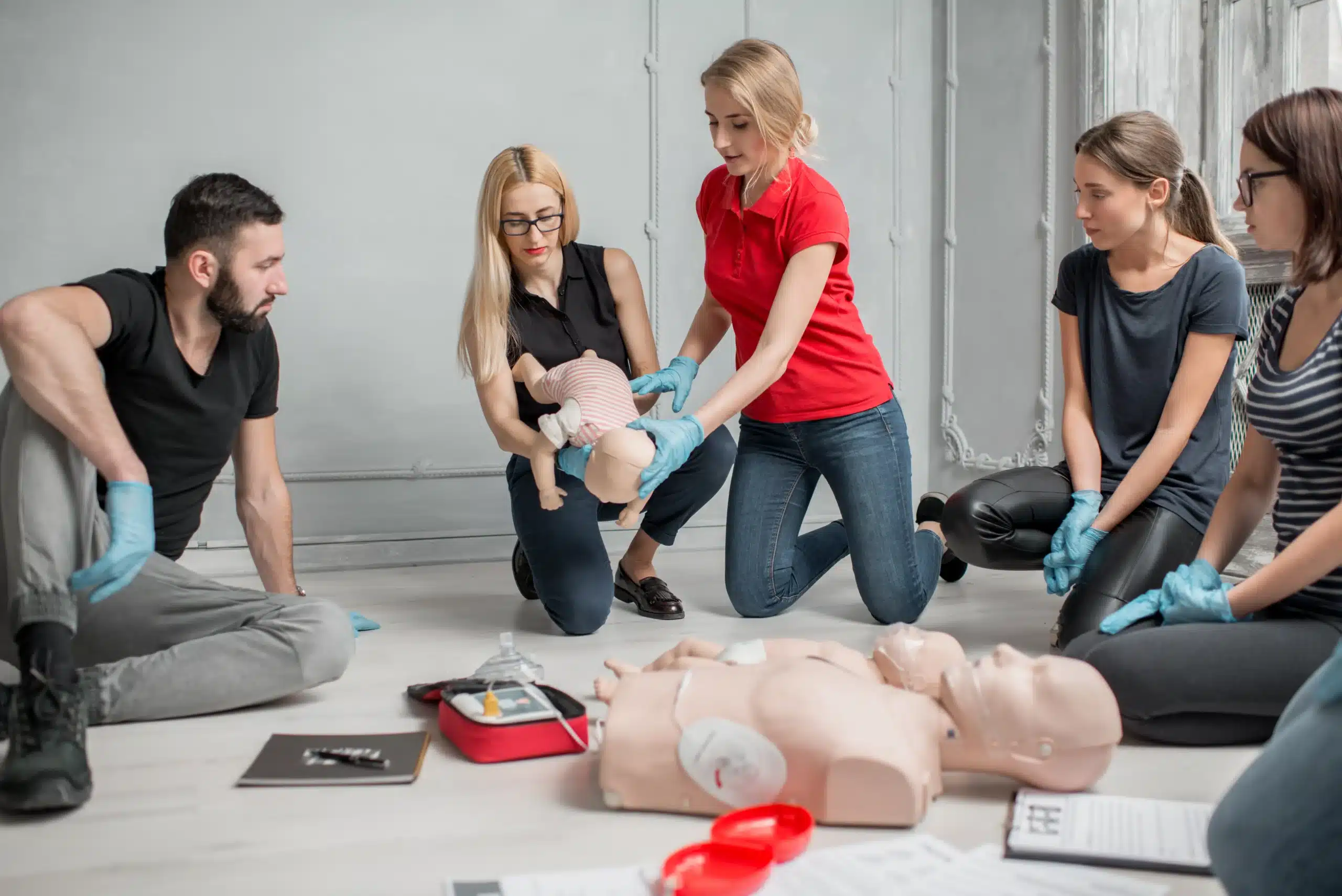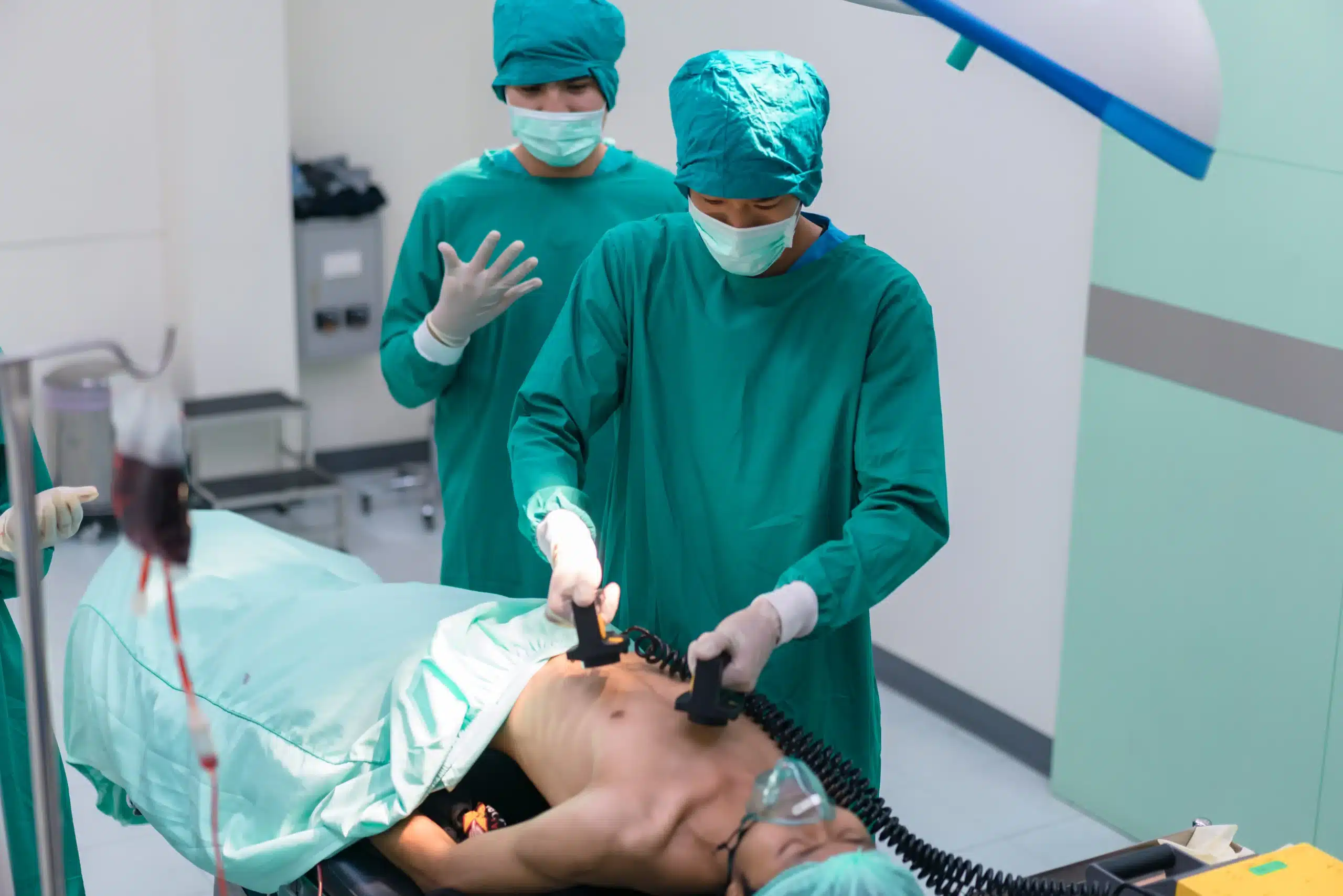In the face of a medical emergency, seconds can matter. BLS certification equips you with the knowledge and skills to provide immediate, life-saving care. This guide breaks down the essentials of BLS, guiding you through the process of finding “BLS classes near me,” understanding the certification process, and maintaining your skills. Whether you’re a healthcare provider or someone who wants to make a difference, this resource will help you on your path to becoming BLS certified.
Key Takeaways
- BLS certification provides essential life-saving skills: Learn high-quality CPR, AED use, and airway management techniques to confidently respond to medical emergencies. Choose a course format—online or in-person—that suits your learning style and schedule.
- Select a BLS course that meets your needs: Prioritize AHA-accredited courses taught by experienced, certified instructors. Hands-on practice and simulated scenarios are crucial for developing competence and confidence.
- Stay current with your BLS skills: Renew your certification every two years and pursue continuing education opportunities to refine your techniques and stay informed about the latest advancements in emergency care.
What is BLS Certification & Why is it Important?
BLS Certification is a course and credential for healthcare providers and other qualified individuals. It equips you with the skills to respond to life-threatening emergencies. These skills go beyond basic first aid, focusing on immediate intervention for cardiac arrest and other critical situations. BLS training emphasizes early recognition and response, giving patients the best chance of survival. It’s a vital part of ensuring high-quality patient care and maintaining a safe environment in any healthcare setting. For more information on BLS Certification, explore our BLS course. We also offer ACLS training for advanced cardiovascular life support.
BLS Training: What Skills Will You Learn?
In a BLS course, you’ll gain practical skills like performing high-quality CPR for adults, children, and infants. You’ll also learn how to use an automated external defibrillator (AED) effectively and how to manage a patient’s airway. BLS training covers essential techniques for relieving choking and provides a foundation for teamwork and communication during emergencies. These skills are crucial for responding confidently and competently in critical situations. We cover these essential skills in our CPR and First Aid Certification courses.
Who Needs BLS Certification?
BLS Certification is essential for many healthcare professionals, including doctors, nurses, paramedics, and emergency medical technicians. It’s also highly recommended for those in related fields like dental professionals, physical therapists, and medical assistants. Anyone working in a healthcare setting where they might encounter a medical emergency benefits from BLS training. Additionally, individuals in roles like lifeguards, childcare providers, and camp counselors often seek BLS certification to be prepared for unexpected situations. For those interested in refreshing their resuscitation skills, take a look at our RQI classes.
How to Find BLS Classes Near You
Finding the right BLS class can feel overwhelming, but it doesn’t have to be. Whether you’re a healthcare professional or want to learn essential life-saving skills, several resources can help you find a suitable course.
Online Search Strategies
Start by searching online. BLS certification courses are offered by many organizations, and a quick search can uncover local options. Use specific keywords like “BLS certification near me” or “American Heart Association BLS classes” to refine your search. Articles about BLS training, like this one from Medicus Training, can also be helpful resources, emphasizing the importance of BLS training in providing effective emergency care. Check online course directories and review platforms to compare providers and read student feedback.
Local Organizations and Institutions
Many local organizations offer BLS classes. Hospitals, fire departments, and community colleges frequently host these courses, making them convenient for residents. As Health Ed Solutions notes, various medical professionals, including those in nursing homes or dental offices, might need BLS certification. Reaching out to these workplaces could help you find local classes. Contacting these institutions directly can give you details on upcoming courses, schedules, and costs. Professional organizations like the American Heart Association offer online resources to find certified training centers nearby. The CNA Training Institute underscores how healthcare organizations prioritize BLS training for their staff. Don’t forget to ask about refresher courses; maintaining your certification is essential, as highlighted by Mandatory Training.
Choosing the Right BLS Class
So, you’re ready to sign up for Basic Life Support (BLS) training? Great! Now, let’s make sure you find the perfect class for your needs. Choosing the right BLS class can significantly impact your learning experience and your confidence in using those skills. Here’s what to consider:
Accreditation and Certification Standards
First things first, confirm the course is accredited by a recognized organization like the American Heart Association (AHA). AHA approval is often a requirement for many healthcare jobs, so double-check the course description for that crucial detail. This AHA-approved BLS course is a good example of what to look for. Proper accreditation not only demonstrates the training’s high quality but also ensures your certification will be widely recognized in the healthcare field.
Qualified Instructors & Their Experience
A great instructor can make all the difference. Look for classes led by experienced, certified instructors, especially those with real-world experience in healthcare or emergency response. Their practical insights can bring the training to life and make it much more valuable. Consider contacting the training center to learn more about the instructors’ backgrounds—it’s helpful to know who will be guiding your learning.
Class Format Options
BLS courses are offered in several formats, from traditional classroom settings to blended learning and online options. Think about your learning style and schedule. Do you thrive in a hands-on environment, or do you prefer the flexibility of online modules? Some courses focus on initial certification, while others cater to recertification or offer specialized training. Explore the different CPR and First-Aid certification courses to see what fits your needs. If you’re a healthcare provider needing to renew your certification, look for a streamlined RQI course to efficiently maintain your credentials.
Benefits of Hands-on Training
While online resources can be helpful, hands-on training is essential for mastering BLS skills. There’s simply no substitute for practicing CPR, using an AED, and managing airways in a simulated environment. This practical experience builds your muscle memory and confidence, preparing you to respond effectively under pressure. In-person training also allows for immediate feedback from instructors, which can fine-tune your technique and address any questions you have in real time. Look for classes that prioritize hands-on practice—it’s an investment in your skills and the lives you may one day impact.
How Much Does BLS Certification Cost?
Average Price Range
The cost of Basic Life Support (BLS) certification varies depending on the training center and course format. In-person BLS certification and recertification typically costs between $50 and $75. Online BLS certification courses often run a bit higher, usually between $75 and $100. Milpitas CPR Classes offers competitive pricing, so check our website for current rates for both in-person and online options. Comparing prices from different providers is always a smart move.
Discounts and Financial Assistance
Looking to save on your BLS certification? Many training centers offer discounts. Some common examples include discounts for students, military personnel, or groups. Others run occasional promotions or package deals. Ask your chosen provider about potential cost savings. While financial assistance programs for BLS certification are less common, some professional organizations or employers offer reimbursement. Exploring these options can make training more affordable.
What to Expect in a BLS Class
So, you’ve signed up for a BLS class—congratulations! Knowing what to expect can help you feel prepared and confident. BLS certification focuses on the fundamentals of life support, equipping you with the skills to respond to cardiac arrest and other emergencies. This section covers the typical flow of a BLS course, from content and assessment to common challenges.
Course Content and Duration
BLS classes cover core life-saving techniques, including high-quality CPR for adults, children, and infants. You’ll also learn how to use an AED (automated external defibrillator) and practice relieving choking. The curriculum often includes team dynamics and effective communication during emergencies. Most BLS courses take between four and six hours to complete, depending on the certifying organization and specific course format. Our BLS courses at Milpitas CPR Classes are designed to be comprehensive and efficient, ensuring you gain practical skills and knowledge within a reasonable timeframe. You can find more information on our BLS certification course on our website.
Practical Skills Assessment
BLS classes aren’t just about lectures and videos. A significant portion involves hands-on practice and skills assessment. You’ll work with mannequins to perform CPR and demonstrate AED use in simulated scenarios. Instructors provide feedback and guidance to help you refine your technique and build confidence. This practical approach ensures you can effectively apply your knowledge in real-life situations. The goal is to build muscle memory and quick thinking so you can respond effectively under pressure.
Common Challenges & Solutions
One common challenge students face is mastering the correct CPR chest compression depth and rate. Consistent practice and instructor feedback are key to overcoming this. Some students also feel anxious about using an AED. However, AEDs are designed to be user-friendly, and instructors will guide you through each step, addressing any concerns. Remember, the instructors are there to support you. Don’t hesitate to ask questions or request additional practice. The more comfortable you are with the material, the more prepared you’ll be to respond to an emergency. At Milpitas CPR Classes, we emphasize a supportive learning environment where students can practice and ask questions freely.
Online vs. In-Person BLS Classes: Pros and Cons
When you’re ready to commit to BLS (Basic Life Support) training, deciding between online and in-person classes is an important first step. Both have their own advantages and disadvantages, so figuring out the best fit for you depends on your learning style, schedule, and priorities.
Online BLS Classes: Pros
- Flexibility and Convenience: Online BLS courses let you learn at your own pace and on your own time. This is a major plus if you have a busy schedule or find it hard to commit to set class times. You can squeeze in a module on your lunch break or study late at night—whatever works best for you.
- Accessibility: Many people find online learning more comfortable. You can study from anywhere with an internet connection, and some find the online portion of the training easier to manage. Keep in mind, though, that the American Heart Association (AHA) requires an in-person skills assessment before you’re officially certified.
Online BLS Classes: Cons
- Limited Hands-On Practice: Online courses are great for learning the theory behind BLS, but they can fall short when it comes to practical application. Hands-on practice is essential for building muscle memory and confidence, and it’s hard to replicate that experience in a purely online environment. This can sometimes leave students feeling less prepared for real-life emergencies.
In-Person BLS Classes: Pros
- Hands-On Training and Immediate Feedback: In-person BLS classes give you the chance to practice your skills in real-time with a qualified instructor. You’ll get personalized feedback and have the opportunity to ask questions, which is invaluable for mastering the techniques. This direct interaction is key for developing the confidence you need to perform BLS effectively in a high-pressure situation. For some, this hands-on training is irreplaceable.
- Interactive Learning Environment: A classroom setting creates a more interactive and collaborative learning experience. You can learn from your classmates, participate in discussions, and benefit from the shared energy of a group. Some students find this type of environment more engaging and conducive to learning.
In-Person BLS Classes: Cons
- Scheduling Conflicts: The biggest drawback of in-person classes is the fixed schedule. If you have unpredictable work hours or other commitments, it can be tough to carve out the time for a scheduled class. Finding a class that fits your availability can sometimes be a challenge.
How to Maintain Your BLS Certification
Once you’ve earned your BLS certification, staying current is key. Knowing the renewal process and taking advantage of continuing education will ensure your skills are sharp and you’re prepared for any emergency.
Renewal Process and Frequency
BLS certifications are typically valid for two years. Mark your renewal date on your calendar as soon as you’re certified. You can usually find recertification courses through the same organizations that provided your initial training. Many providers, like the American Red Cross, offer these courses within 30 days of your expiration date, giving you a little buffer. Check with your certifying organization for their specific renewal policy.
Continuing Education Opportunities
Even if your certification isn’t up for renewal yet, there are ways to keep your skills fresh. Think of continuing education as a way to not just maintain your certification, but to truly excel in your ability to provide care. BLS renewal classes offer a chance to brush up on your knowledge, learn about advancements in emergency care, and practice realistic emergency scenarios. These opportunities are invaluable for staying confident and competent. Regular refresher courses are highly recommended, especially for healthcare providers. Staying informed about the latest best practices is a crucial part of maintaining your BLS certification and providing the highest quality care. For more information on the importance of BLS training and continuing education for healthcare providers, resources like the Resuscitation Council UK (RCUK) and the Skills for Health Core Skills Training Framework (CSTF) offer valuable insights.
Top BLS Certification Providers
Finding the right BLS certification provider is key to receiving high-quality training. Several reputable organizations offer comprehensive BLS courses that meet industry standards. Here’s a closer look at some of the top providers:
Milpitas CPR Classes
If you’re in the Milpitas, San Jose, or Santa Clara area, Milpitas CPR Classes offers convenient and thorough BLS certification courses. They focus on equipping healthcare professionals with the skills to manage medical emergencies. For those also seeking CPR and First Aid certification, they offer combined courses as well.
American Heart Association (AHA)
The American Heart Association is a leading authority in CPR and emergency cardiovascular care. Their BLS certification courses are widely recognized and respected in the healthcare field. The AHA provides a range of courses, including BLS for Healthcare Providers and Heartsaver courses for the general public. These courses cover essential life-saving skills.
American Red Cross
The American Red Cross is another well-known provider of BLS training. They offer various options, including initial certification, renewal courses, and even instructor training. Their BLS courses blend hands-on practice with real-world application, helping you develop the skills and confidence to respond effectively in emergencies.
National Safety Council
The National Safety Council provides BLS training essential for healthcare professionals. They offer both online and in-person courses, providing flexibility for busy schedules. Their BLS training programs focus on comprehensive skill development, preparing you for various emergency situations.
ProTrainings
ProTrainings emphasizes hands-on learning in their BLS courses for healthcare professionals. This practical approach allows you to practice essential skills and demonstrate proficiency. Their BLS certification courses build confidence through real-world application.
Health & Safety Institute (HSI)
The Health & Safety Institute (HSI) understands the importance of staying up-to-date with the latest BLS practices. They offer various BLS training options, including refresher courses, to help healthcare providers maintain their skills and knowledge. They emphasize aligning with best practices from regulatory bodies, ensuring you can provide high-quality care in emergencies.
Tips for BLS Class Success
Getting ready for your BLS class? A little prep work goes a long way. Before class, brushing up on the basics of CPR and AEDs can make a real difference. Familiarizing yourself with these core concepts gives you a head start and makes the course material easier to grasp.
Choosing the right class format is also important. While online courses offer flexibility, in-person training provides hands-on practice that’s essential for mastering BLS techniques. That face-to-face interaction with instructors and classmates can be invaluable. If you’re looking for more information, My CPR Certification Online highlights the benefits of in-person BLS courses.
Once you’re in class, be an active participant. Ask questions, engage in discussions, and take advantage of every opportunity to practice. The more involved you are, the more you’ll absorb. This training is about saving lives, so making the most of your class time is crucial.
And it doesn’t end when you leave the classroom. Regular practice is key to maintaining your skills. Think of it like any other important skill – the more you use it, the better you become. Consider enrolling in refresher courses to keep your knowledge fresh and your abilities honed. Finally, remember why you’re getting certified. Understanding the importance of BLS and how it can empower you to help others in critical situations can be a powerful motivator. A-B-CPR offers insights into who needs BLS certification and why it matters.
Related Articles
- BLS Certification in San Jose: Your Complete Guide – Milpitas CPR Classes
- BLS Certification Milpitas: Your Comprehensive Guide – Milpitas CPR Classes
- BLS Courses in San Jose: Your Complete Guide – Milpitas CPR Classes
- BLS Certification in Santa Clara: Your Complete Guide – Milpitas CPR Classes
- BLS Courses in Santa Clara: Your Complete Guide – Milpitas CPR Classes
Frequently Asked Questions
What is the difference between BLS and CPR? CPR (Cardiopulmonary Resuscitation) is a specific technique used within BLS (Basic Life Support). BLS encompasses a broader range of skills, including CPR, AED use, and airway management, making it a more comprehensive approach to life support. Think of CPR as one tool within the larger BLS toolkit.
How long does a BLS certification last, and how do I renew it? BLS certification is typically valid for two years. To renew, you’ll need to take a recertification course before your current certification expires. Check with your certifying organization or training center for specific renewal requirements and available courses. They can guide you through the process and ensure a smooth transition to your renewed certification.
What if I have a busy schedule? Are there flexible options for BLS training? Yes, there are options for busy schedules. Many training centers offer weekend or evening classes, and some even provide blended learning formats that combine online modules with in-person skills sessions. Online-only courses are also available, but remember that an in-person skills check is usually required to obtain certification.
Is BLS certification the same for everyone, or are there different levels? While the core principles of BLS are consistent, there are some variations in training depending on the provider and the intended audience. For example, the American Heart Association offers BLS for Healthcare Providers, which is tailored to the needs of medical professionals. They also offer Heartsaver courses designed for the general public. Make sure to choose the course that aligns with your specific requirements.
How can I find BLS classes near me? Start by searching online using keywords like “BLS classes near me” or “BLS certification [your city]”. You can also check with local hospitals, community colleges, and organizations like the American Heart Association or American Red Cross. They often have resources to help you locate certified training centers in your area.
